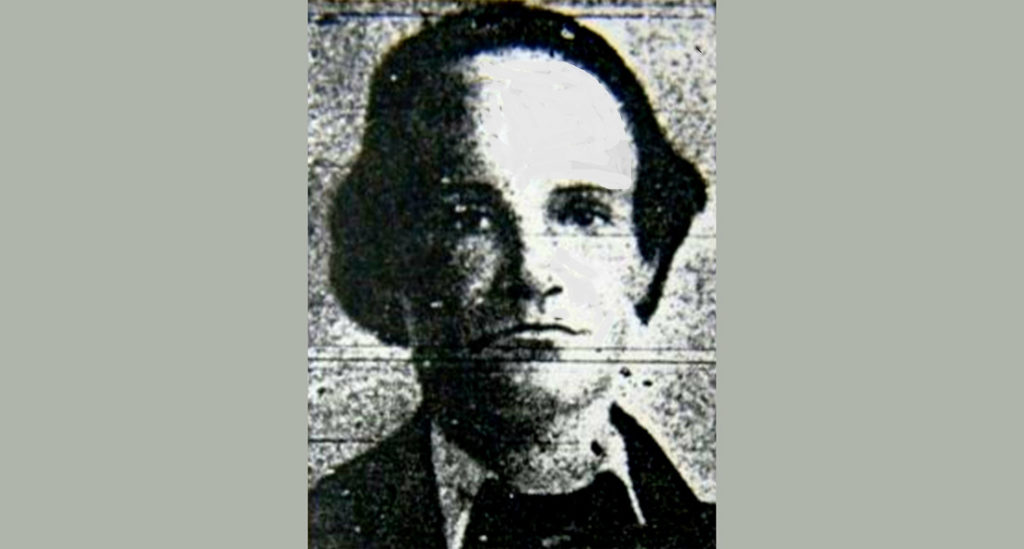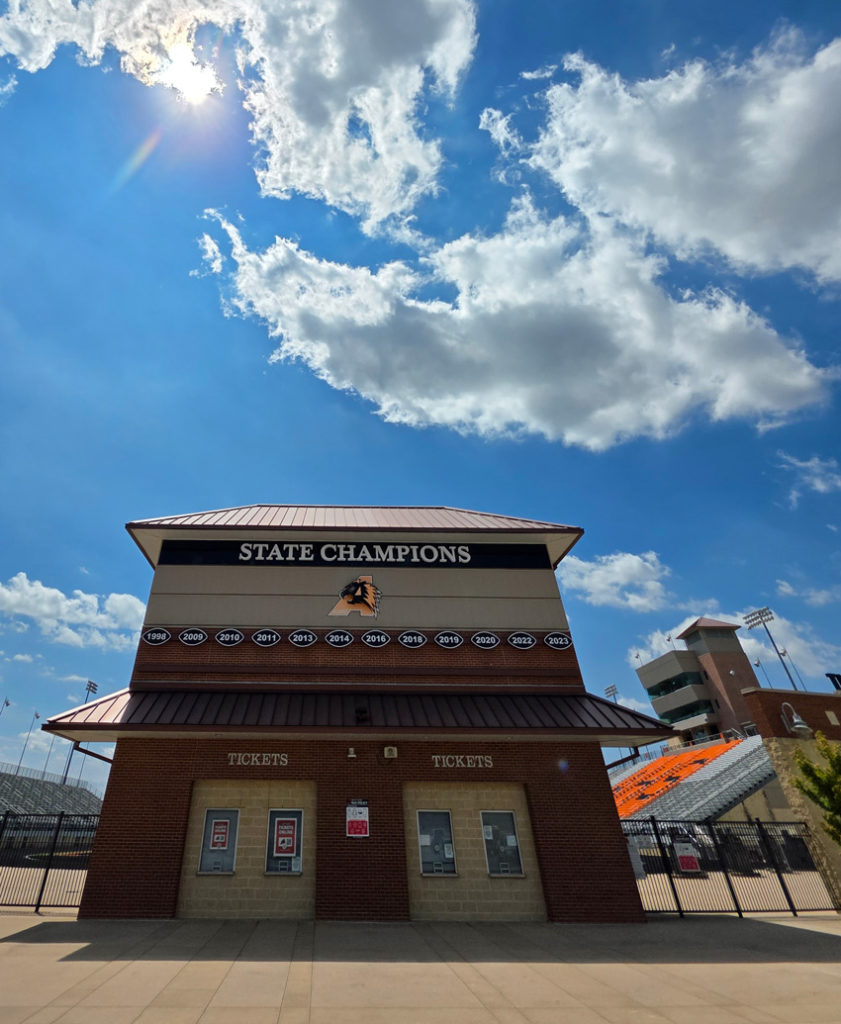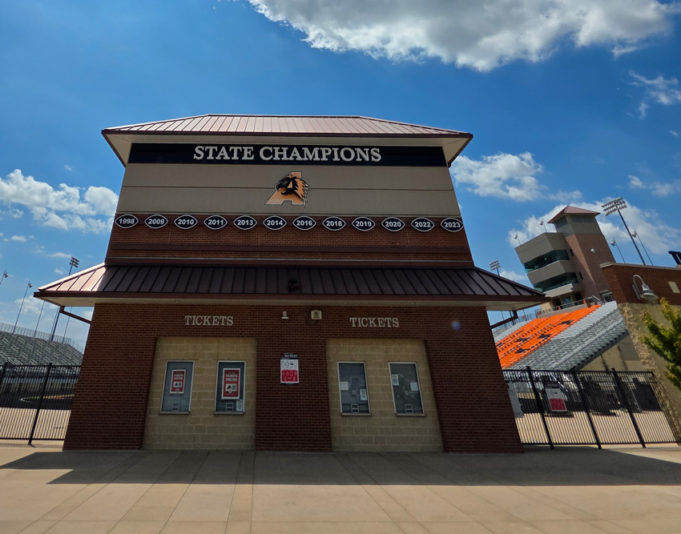White flight, the departure of white residents from predominantly urban areas — particularly as those areas become more racially and ethnically diverse — is a relatively new phenomenon. Black flight is not, especially here in Texas. And we should be reminded of this every July.
On July 24, 1887, a forgotten legendary North Texas landowner named Thomas Bean died. He never enjoyed the same notoriety as the infamous Judge Roy Bean (no relation) in Southwest Texas, but he was a prominent figure. And he does have a town named after him.
Thomas Bean was a resident of Bonham, Texas, the Fannin County seat, but when I visited recently, I didn’t encounter a single soul who’d ever heard of him — which was exceedingly curious.
By the mid 1880s, Thomas Bean had amassed tens of thousands of Texas acreage in at least eight counties, including Fannin, Grayson, Cooke, and Collin. Some folks claimed that Bean could ride from Bonham to San Antonio by horse and spend every night on his own land, but his land holdings notwithstanding, Bean lived in a modest 14-by-14-foot one-room cabin. And instead of leasing, cultivating, or at least fencing his vast holdings, he kept them available for poor folks, free of charge. In fact, he allowed several Black Texans to put up cabins near his and seemed to prefer their company to that of the white Bonham townsfolk.
Bean was soft-spoken and reserved, but everyone in Bonham knew him. He was a respectable gentleman but had few close friends. He gave to every church in the community but declined membership in all. He occasionally made appearances at town balls, but neither called on nor courted any white Bonham ladies. One newspaper of the period characterized Bean as one “possessed of the noble but rare trait of attending to business.” And business was good. Bean had moved to the Bonham area in the early 1840s and worked as a land surveyor. He charged 25 cents an acre but would accept payment only in acreage. According to Fannin County, Texas Land Titles (published in 1979), Bean owned almost 7,000 acres in Fannin County alone at the time of his demise.
A Black woman named Sukey Byers lived right behind Bean and reportedly worked as his cook and housekeeper. She and her immediate kin were always around the Bean place, and it was clear he considered them extended family.

Courtesy the author
When Bean died surrounded by his extended Black family, Sukey Byers ran through the streets crying. Maybe she loved Bean. Maybe she knew what would happen next.
It was generally believed that Bean had left behind a will, leaving most of his assets to his extended Black family, but the document conveniently disappeared, and, by July 26, 1887, folks were already wondering what would happen to Bean’s immense holdings. Fannin County Judge E. D. McClellan placed W.W. Russell, Sim Winneler, John Sparks, and a Bonham municipal judge on a committee to take charge of the papers belonging to the Bean estate, but, with the will missing, his lands and wealth were fair game.
Within a month, the story of Bean’s heirless fortune was bandied about in conversations along both coasts and from the Great Lakes to the Gulf of Mexico, and Bonham became a mecca for the litigious. As the Galveston Daily News described it, “Claims were filed and the lawyers smiled sweetly … like vultures watching their victims.”
On Sep. 23, 1887, a Louisianan named James W. Saunders appeared in Bonham claiming to be Bean’s younger brother. He said Bean changed his name after killing a man named “Crutchfield” in Tennessee and asserted that Bean had lived as a fugitive in Camden and Fayetteville, Arkansas, before settling in Bonham.
James Gass, a Black man identified as a former slave of Bean’s, insisted he had seen Saunders visit with Bean in 1864. A Galveston Daily News reporter initially described Gass as “mute as an Egyptian mummy,” but Gass eventually loosened up, claiming that he could “prove by prominent white men that Col. Bean had a will” and that “he gave a part of his estate to we darkies.”
On Oct. 1, a Col. M. Leeper of Sherman came forth and claimed to have known Bean, his father Colmore, and his brothers John and Oscar as far back as when they lived in Fayetteville between 1839 and 1840. Leeper said Bean never mentioned that his name was Saunders or that he had killed a man. “In fact,” Leeper added, “I am loath to believe that he would kill anyone.”
Bean had been to the Leeper residence in Sherman on several occasions, so Col. Leeper’s opinion held great weight.
The first hearing regarding the future of the Bean estate occurred in Fannin County Court on Nov. 29, 1887. A new player, H.P. Howard of San Antonio, filed a motion for executorship of the estate, based on a plea of direct kinship. Howard claimed to be the grandson of Colmore Bean’s brother John. Howard’s attorney stated that Bean’s identity could be established as far back as 1836, and this demonstration rendered Saunders’ claims of murder and flight ludicrous. Saunders argued that there was no need for an executorship (because the estate was only minutely indebted) and that the matter should proceed directly to district court to determine “heirship.” W.W. Russell, a member of the current committee serving as executor of the estate, pleaded for an extension of his executorship.

Photo by E.R. Bills
On the second day of court proceedings, to the surprise of many, counsel for H.P. Howard suddenly introduced a packet of letters supposedly discovered at the Bean cabin, chronicling correspondence between Bean, his father, and his brothers from 1842 to 1846. How this packet had escaped Judge McClellan’s preliminary committee for the estate was never quite explained, but it clearly gave Howard the upper hand.
The packet of letters reportedly included an 1832 correspondence from B.F. Landers of Fayetteville to Bean, relating the news of Oscar Bean’s demise while en route to California, and an 1833 letter from W.B. Smith of California, describing the circumstances of the death of Bean’s brother John due to the accidental discharge of his own firearm.
After Howard’s attorney presented Bean’s supposed personal correspondences, counsel for W.W. Russell introduced witnesses for rebuttal. A former Fannin County district clerk named Blair was sworn in and presented election records of 1870 which indicated that Bean listed his sworn age as 48. Russell also took the witness stand, testifying that despite what Howard’s counsel had submitted, no papers found at the Bean residence traced his identity as far back as 1836.
For the next four decades, dozens of ambitious white claimants continued to appear, introducing continuations, fresh disputations, inter-pleadings, requests for judgment dismissals, and more. By 1920, the presiding county courts began requiring $5,000 bonds to even have litigation involving the Bean estate revisited or reopened. In 1938, the state reportedly stepped in and assumed control of whatever parts of the estate that were still in dispute.
In the end, every parcel of Bean’s immense holdings was sold or claimed and leased and fenced, and Bean’s extended Black family was entirely disenfranchised. In fact, they seem to have fled or disappeared.
Today, the only evidence of Thomas Bean’s life and times is Tom Bean, a town named after him in Grayson County. Shortly before his death, he donated 50 acres for a new stretch of railroad from Sherman to Commerce. His namesake community sprang up along the new railroad branch, and though he’d never been there and probably wouldn’t have been comfortable with having a town named after him, it’s practically the only trace of him left.
Five days and 23 years after Thomas Bean’s extended Black family was robbed in court proceedings, Black Texans farther south in southeastern Anderson County and northeastern Houston County were dispossessed extra-judicially. Greedy white folks just started killing them indiscriminately in what would come to be known as the Slocum Massacre of 1910. The surviving Black citizens fled for their lives, and though seven white men were indicted, none were ever prosecuted.
This July 29 marked the 115th anniversary of the Slocum Massacre, and an unknown number of victims still lay in unmarked mass graves around the area — but they have no land left to steal or toils left to exploit. So, white folks here in Texas pay them little mind. An official investigation and some act of civic atonement — similar to those of Oklahoma’s regarding the Tulsa Race Massacre or Florida’s concerning the Rosewood Massacre — seems as far away as heaven.
But one ironic note.
White flight made small towns and suburbs grow and expand, but Friday Night Whites sucked. They realized they needed the inner-city descendants of their forebears’ victims to improve their chances on Texas’ biggest stage.
So, young, Black, inner-city teenagers who can carry a football (and their families) are now welcome in white-bread ’burbs, some (if not all) expenses paid (or deferred). And it works out all around. Friday Night Whites can become Titletown. And their new compensated Black teammates (and families) get a head start on the collegiate NIL system.
That’s a form of reparation, right? And two-a-days are just around the corner.
Fort Worth native E.R. Bills is the author of seven nonfiction titles, including Tell-Tale Texas: Investigations in Infamous History.
This column reflects the opinions and fact-gathering of the author(s) and only the author(s) and not the Fort Worth Weekly. To submit a column, please email Editor Anthony Mariani at Anthony@FWWeekly.com. He will gently edit it for clarity and concision.











